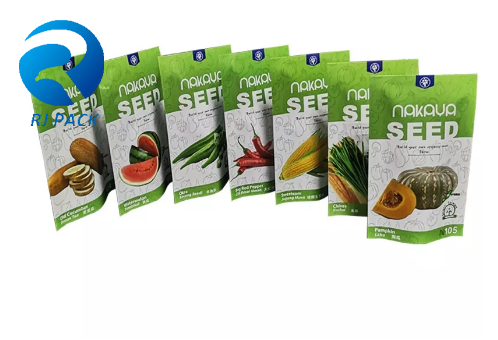What are the environmental considerations of using these pouches?
2023-10-17
Positive Environmental Considerations:
1. Reduced Material Usage: Stand-up pouches typically use less material compared to traditional rigid containers, such as bottles or jars. This reduced material usage can lead to lower resource consumption and less waste generation.
2. Lightweight and Efficient Transportation: Stand-up pouches are lightweight, which reduces the overall weight of packaged seeds during transportation. Lighter shipments can lead to lower fuel consumption and greenhouse gas emissions during transportation, contributing to reduced carbon footprints.
3. Recyclable Options: Many stand-up pouches are made from recyclable materials, such as certain types of plastic films. Recycling these pouches after use can help divert waste from landfills and conserve valuable resources.
4. Flexible Packaging Design: Stand-up pouches offer flexible design options, allowing for more efficient use of shelf space during storage. This can lead to better space utilization and reduce the need for excessive packaging materials.
5. Extended Shelf Life: The protective features of stand-up pouches, such as moisture and light barriers, can help extend the shelf life of seeds. Longer shelf life means less food waste and fewer resources required for producing replacement seeds.
Negative Environmental Considerations:
1. Single-Use Plastics: Some stand-up pouches are made from multi-layered materials that are challenging to recycle and may end up as single-use plastics in the environment if not properly disposed of or recycled.
2. Recycling Challenges: While some stand-up pouches are recyclable, not all recycling facilities accept them due to their complex composition. This can lead to challenges in ensuring proper recycling and may result in the pouches ending up in landfills.
3. Litter and Pollution: Improperly discarded or littered stand-up pouches can contribute to environmental pollution. Plastic pouches that end up in oceans or waterways can harm wildlife and marine ecosystems.
4. Resource Intensive Production: The production of stand-up pouches may require significant energy and resources, depending on the materials and manufacturing processes used.
To mitigate the environmental impact of using stand-up pouches for seed packaging, seed suppliers and consumers can take several steps:
- Opt for stand-up pouches made from recyclable materials whenever possible.
- Encourage customers to dispose of used pouches responsibly and participate in recycling programs.
- Consider reusable or compostable pouch options for seed packaging.
- Choose suppliers that follow sustainable and eco-friendly packaging practices.
Overall, the environmental impact of using stand-up pouches depends on the materials used, recycling practices, and end-of-life disposal. By making thoughtful choices and promoting responsible use and disposal, the environmental footprint of stand-up pouches can be minimized.



